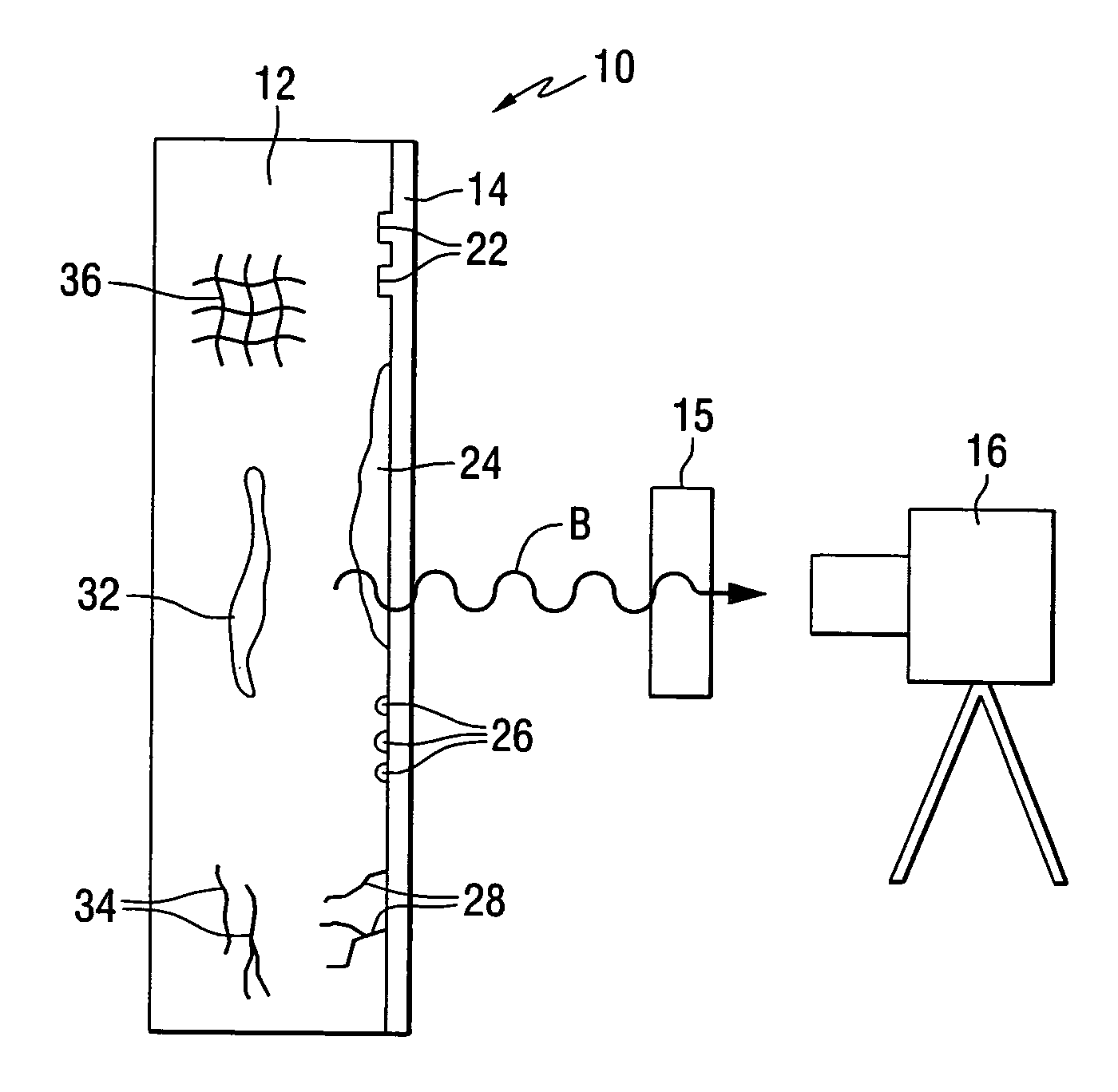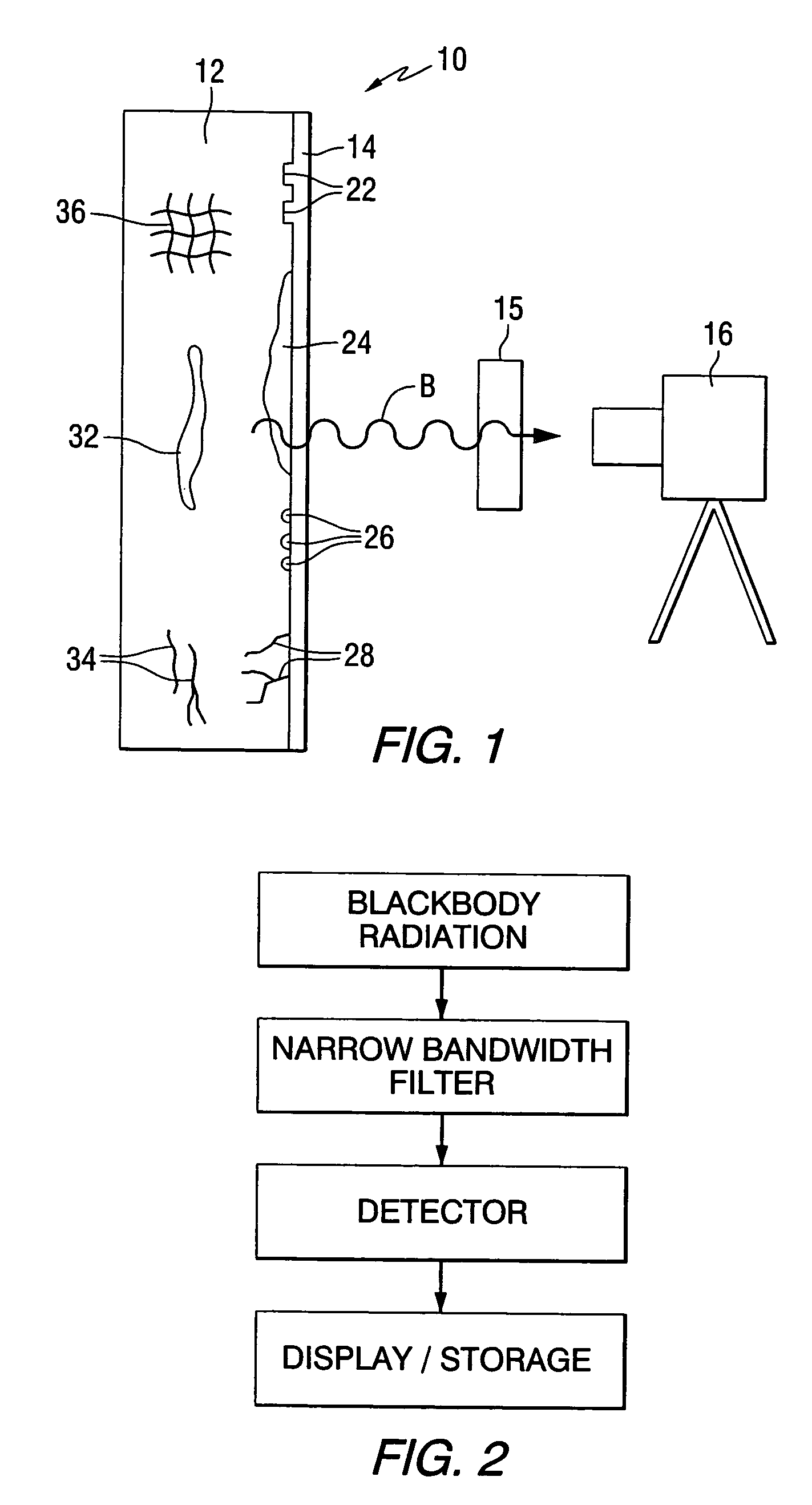Spectral filter system for infrared imaging of substrates through coatings
a spectral filter and infrared imaging technology, applied in the field of infrared imaging of substrates, can solve the problems of constant degradation of aircraft components, inability to eliminate them completely, and inability to mitigate the effects of coatings, so as to improve the viewing clarity of defects
- Summary
- Abstract
- Description
- Claims
- Application Information
AI Technical Summary
Benefits of technology
Problems solved by technology
Method used
Image
Examples
example 1
[0044]An aluminum panel coated with Military Grade Epoxy Primer, MIL-P-23377TY1 and Military Grade Polyurethane Top Coat, MIL-PRF-85285 TYI having a total thickness of approximately 2.1 to 3.3 mils (0.0021 to 0.0033 thousands of an inch) was imaged with a standard mid-wave Merlin™ IR Camera with the standard of detection limits of the focal plane in the mid-wave. The panel was illuminated with IR radiation. A filter comprising multiple filters having an adjustable bandwidth was used to produce images at settings of 3-5 micrometers, 3.5-5 micrometers, and 3.75-5 micrometers. During the imaging process, the panel was held at room temperature or approximately 70 to 75° F. FIG. 5 shows the results with the 3-5 micrometer filter; FIG. 6 shows the results with the 3.5-5 micrometer filter; and FIG. 7 shows the results with the 3.75-5 micrometer filter. The figures show the improved effect of glare removal. FIG. 5 shows the baseline image produced by the standard mid-wave Merlin™ IR Camera....
example 2
[0045]Example 1 was repeated, except the aluminum panel was coated with two coats of Military Grade Epoxy Primer, MIL-PRF-23377TYI and two coats of Military Grade Polyurethane Top Coat, MIL-PRF-85285TYI having a total approximate thickness of 4.2 to 6.6 mils (0.0046 to 0.0066 thousands of an inch). FIG. 8 shows the results with the 3-5 micrometer filter; FIG. 9 shows the results with the 3.5-5 micrometer filter; and FIG. 10 shows the significantly improved results with the 3.75-5 micrometer filter.
[0046]FIGS. 5-10 illustrate the improved contrast that can be seen after the incorporation of the narrow bandwidth filter of the present invention. In addition to self-illumination and IR-illumination techniques, the present narrow bandwidth filter is also applicable to active thermography to improve contrast and fidelity of images produced from the flash lamp process. The images produced by active thermography can also be of the reflectance mode or images produced from the thermographic c...
PUM
 Login to View More
Login to View More Abstract
Description
Claims
Application Information
 Login to View More
Login to View More - R&D
- Intellectual Property
- Life Sciences
- Materials
- Tech Scout
- Unparalleled Data Quality
- Higher Quality Content
- 60% Fewer Hallucinations
Browse by: Latest US Patents, China's latest patents, Technical Efficacy Thesaurus, Application Domain, Technology Topic, Popular Technical Reports.
© 2025 PatSnap. All rights reserved.Legal|Privacy policy|Modern Slavery Act Transparency Statement|Sitemap|About US| Contact US: help@patsnap.com



